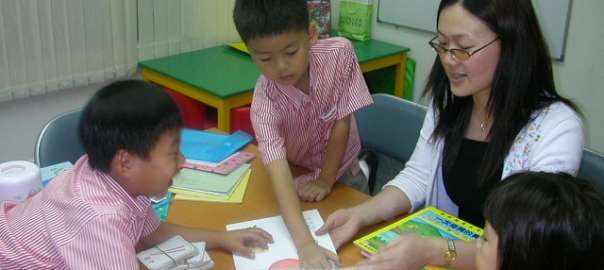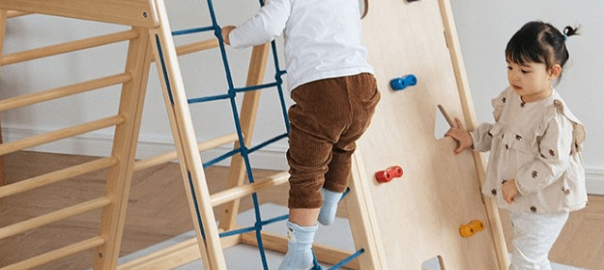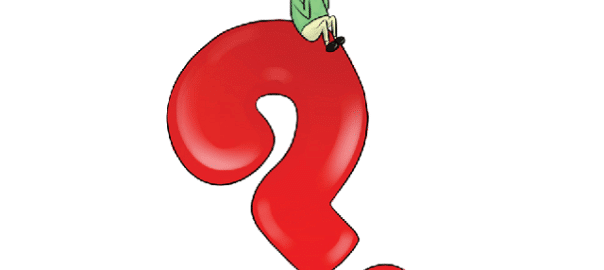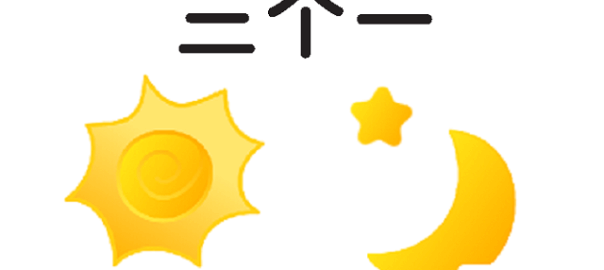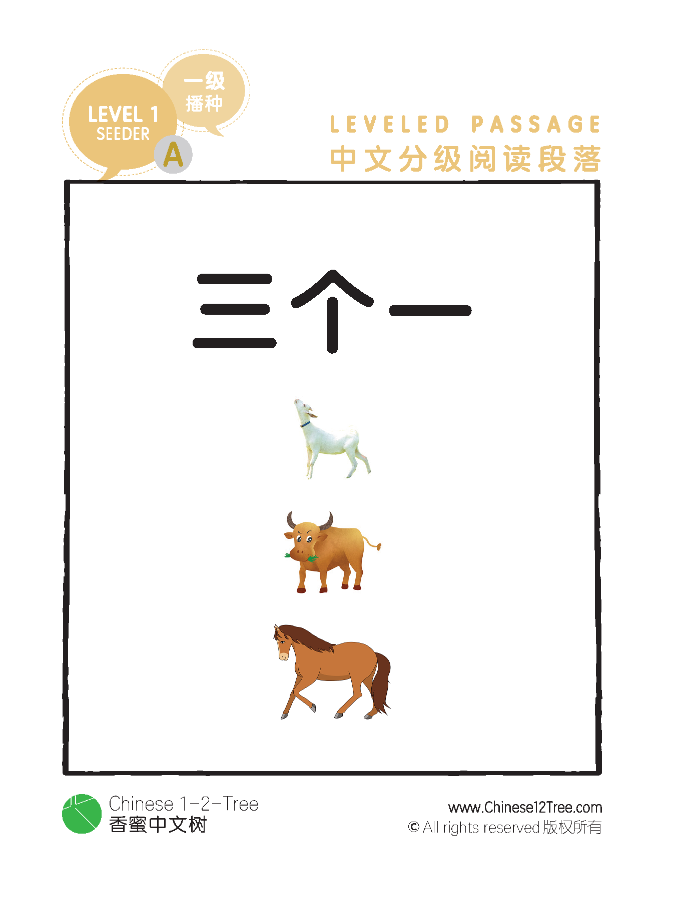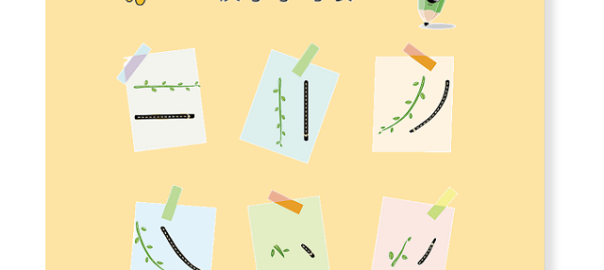What Is a Basal Reading Program?
A basal reading program is a core reading program that is used to teach children to read. The basal reading program acts as the basis for the lessons that teach children reading skills. The Basal reading program is a well-known concept in English learning. And it is a very successful approach to language learning.
We have bought the concept forward to teach young Chinese language learners to read Chinese. It was so successful that led us to design and develop the Chinese 1-2-Tree product which started with basal reading series.
Chinese 1-2-Tree basal series comes with individual identical books for students, a lesson plan, and a collection of worksheets/activities, and assessments. They are used to teach foundation reading and associated skills to schoolchildren. We recommend a basal reading program as it can be much beneficial for young learners in reading and understanding. They are practical and easy to implement in the classroom.
Chinese 1-2-Tree basal series covers all aspects of reading learning (Chinese character awareness, fluency, vocabulary, comprehension, assessments, and activities) in a systemic, explicit, and comprehensive way. They are intended to teach children to read at or above grade-level expectations and give them all the skills they need to make reading progress.
Our basal readers provide a base for teachers to use. Teachers are encouraged to supplement the core reading program with other texts and activities. Our basal readers bare little resemblance to the dry, repetitive texts that are common in Chinese textbooks. They include interesting and relevant stories, challenging vocabulary words, and learning instruction.
The 2/3 Stepstone Reading
预备读三基石之二
传统观念以及传统的汉语教学,学生认读一般来说要从简单的汉字开始,然后一个字一个字的慢慢学习和慢慢积累,随着汉字量一步步上升,再一步步进入阅读学习。在这里我们想给大家带来一个不那么一样的中文阅读起步姿势——预备读三基石。
- 第一阶基石,从笔画到偏旁字干
- 第二阶基石,从偏旁字干到汉字
- 第三阶基石,基本字应用和理解
这里给大家呈上一本 预备读基石二阶之样板工作册《忄》,点击链接可免费下载。如打印,请设定打印尺寸为A5。
派发给学生试用时,建议老师先不作讲解,待学生做完后再看学生完成的成品,说不定结果有惊喜呢 
Nursery > Pre K > Lower Primary > Upper Primary > Middle School … 从幼儿到中学……学龄期起码持续14-15年。
在这样一个长长的学习期里,一个家庭为孩子的将来作出重要的教育投资,在孩子的学习时间表上挤出了学中文的时间。这时,各个年龄段的国际中文老师针对这些孩子的需要和学习能力进行精心教学和培养孩子们的汉语听说及认读理解写,同样家长一路陪伴呵护和坚持着。家庭的教育投资,孩子的宝贵学习时间,都容不得浪费。作为教学者我们知道,不论是听说还是认读理解写,有效的内容输入是关键的存在。
孩子的自主阅读从20个种子汉字开始
学认读汉字,是为了中文阅读。要阅读中文,汉字教学是最基本的输入项。那么学生认识多少个汉字,就可以开展有意义的阅读课程呢?
传统教学上有意见主张:学生需要认识300个基本汉字后才可以进行独立阅读。这个主张,对于国际中文教学,面对的对象是汉语非母语的学生来说,无疑是一个令人左右为难的状况。因为只学字不学读,不但容易学着忘着,而且不容易理解字的意思和实际应用。最大的问题还在于,学生的持续学习力无法得到培养,学生流失情况严重。
这里我们要提出我们的主张。这个主张来自我们多年的一线教学经验。下面是我们选来做为阅读起步的20个种子汉字:
一 二 三 四 五
六 七 八 九 十
人 大 头 上 下
天 日 月 星 个
种子汉字有了,那么接着的一步、一步怎样习得更多的汉字30、50、100……呢?怎样一步步带领学生开展有效的阅读课程呢,其中的一个个节点有什么关键处理呢?且听下回分解!
Scaffold Leveled Passage
鹰架式分级段落
三个一
 Seeder, Level 1A 一级播种A
Seeder, Level 1A 一级播种A
学生认知多少个汉字时,老师们可以为学生起步开展阅读课程,前段时间我们曾做过一次Vote。很意外的,Vote 结果高居第一名的是20个汉字,鹅很高兴有这么多志同道合的老师哎。Vote 结果第二名,正是传统中文教学上认为的300字。下面给师友们呈上我们建议为学生展开起步阅读的20个种子汉字:
一 二 三 四 五 六 七 八 九 十
人 大 头 上 下 天 日 月 星 个
要为国际幼小初学龄段的学生起步开展有意义的阅读课程,有一个我们认为非常关键的地方。就是阅读课程中的每一个级别的每一篇文段都需要做鹰架式的分级编写。否则文中出现大量的生字,老师一个个填鸭式地塞给学生,学生学着忘着痛苦着,还没有时间做有效的理解。这可不是阅读课程,而是生字课,或者是词语课了。
使用这20个种子,我们编写了一篇名为“三个一”的小短篇。有兴趣的老师可以试试来做一篇命题小作文,要求文中许可使用的超纲字不能超过1个。期待老师们的反馈意见和想法。
The written form of the Chinese language is composed of Chinese characters, called Hanzi. Regardless of hundreds or thousands of Hanzi, each hanzi is made up of 6 simple strokes and their transforming strokes – the Chinese Character Alphabet, or Hanzi Alphabet 汉字字母表. Just like strokes assembled, here all Hanzi come.
The 6 simple strokes are called Root Strokes as the entire Hanzi in written where comes from. These 6 Root Strokes are named héng shù piě nà diǎn tí. Play the video to watch how the young kids sing and wave their fingers of these Root Strokes.
Each Hanzi is pronounced in sole-syllable in Pinyin. People can start with Pinyin (an alphabet tool for Chinese speaking) to learn how to speak Chinese. Meanwhile, people can start with the Chinese Character Alphabet to learn how to write Chinese. This means people can learn Chinese speaking and Chinese writing separately for their needs.

